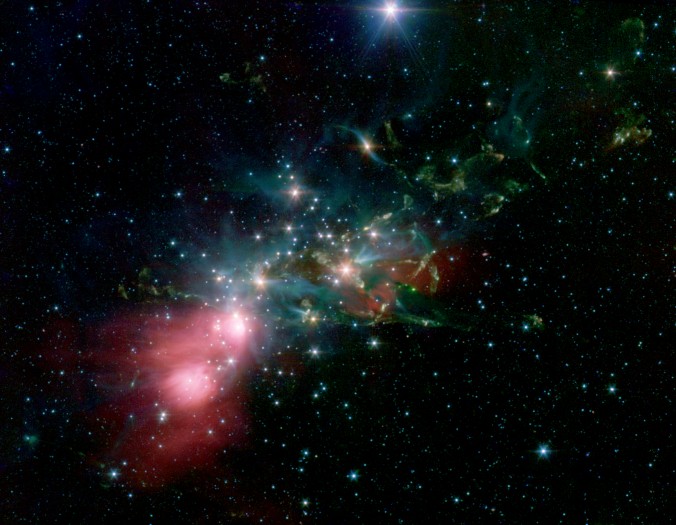Explanation: Dusty NGC 1333 is seen as a reflection nebula in visible light images, sporting bluish hues characteristic of starlight reflected by dust. But at longer infrared wavelengths, the interstellar dust itself glows - shown in red in this false-color Spitzer Space Telescope image. The penetrating infrared view also shows youthful stars that would otherwise still be obscured by the dusty clouds which formed them. Notably, greenish streaks and splotches that seem to litter the region trace the glow of cosmic jets blasting away from emerging young stellar objects as the jets plow into the cold cloud material. In all, the chaotic scene likely resembles one in which our own Sun formed over 4.5 billion years ago. NGC 1300 is a mere 1,000 light-years distant in the constellation Perseus.
1999 2000 2001 2002 2003 2004 2005 2006 2007 2008 2009 2010 2011 2012 2013 2014 2015 2016 2017 2018 2019 2020 2021 2022 2023 2024 2025 |
Yanvar' Fevral' Mart Aprel' Mai Iyun' Iyul' Avgust Sentyabr' Oktyabr' Noyabr' Dekabr' |
NASA Web Site Statements, Warnings, and Disclaimers
NASA Official: Jay Norris. Specific rights apply.
A service of: LHEA at NASA / GSFC
& Michigan Tech. U.
|
Publikacii s klyuchevymi slovami:
reflection nebula - infrared - star formation - Pylevaya tumannost' - Oblasti zvezdoobrazovaniya - infrakrasnoe izluchenie
Publikacii so slovami: reflection nebula - infrared - star formation - Pylevaya tumannost' - Oblasti zvezdoobrazovaniya - infrakrasnoe izluchenie | |
Sm. takzhe:
Vse publikacii na tu zhe temu >> | |
